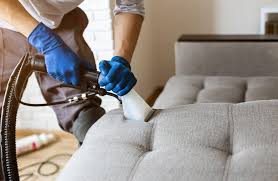Furniture plays a crucial role in our daily lives, providing comfort, functionality, and aesthetic appeal to our living spaces. While many people focus on dusting surfaces and vacuuming floors, furniture cleaning often takes a backseat. However, neglecting to clean your furniture regularly can have a significant impact on your health in ways you may not have considered.
The Hidden Health Risks Lurking in Your Furniture
Furniture, whether it’s a plush sofa, an upholstered chair, or a wooden table, accumulates dust, dirt, and allergens over time. These contaminants settle into fabrics and crevices, making your home a breeding ground for bacteria and dust mites. When left uncleaned, they can trigger respiratory issues, skin irritations, and even exacerbate allergies. Join the discussion about furniture cleaning and share your thoughts.

One of the biggest culprits is upholstered furniture, which absorbs everything from pet dander and dead skin cells to food crumbs and airborne pollutants. Without proper maintenance, these materials become deeply embedded, making it difficult to remove them with regular vacuuming alone. Over time, this can lead to poor indoor air quality, affecting everyone in the household.
How Dirty Furniture Affects Indoor Air Quality
Many people assume that keeping windows open or using air purifiers is enough to maintain fresh indoor air. While these measures help, they don’t eliminate the pollutants trapped in furniture. Dust and allergens from sofas, cushions, and mattresses become airborne whenever someone sits down or moves around, causing them to circulate throughout the home.
Poor air quality can lead to symptoms such as headaches, fatigue, and sinus congestion. It can be especially problematic for individuals with asthma or allergies, as they are more sensitive to airborne particles. Regular furniture cleaning ensures that these contaminants are removed, creating a healthier living environment for everyone.
The Connection Between Furniture Cleaning and Skin Health
Skin contact with unclean furniture can lead to unexpected reactions, particularly for those with sensitive skin. Dust mites, bacteria, and mold spores can cause rashes, irritation, and breakouts when they come into direct contact with the skin. This is particularly concerning for children, who tend to spend a lot of time playing on sofas and carpets.

Additionally, upholstered furniture can absorb body oils and sweat, which contribute to unpleasant odors and create a hospitable environment for bacteria growth. This can result in acne flare-ups, eczema aggravation, and other skin issues that could easily be avoided with regular deep cleaning.
The Role of Furniture Cleaning in Reducing Allergies
Allergens are a common issue in homes, particularly in spaces with fabric-covered furniture. Pollen, pet hair, and dust mites accumulate in upholstery, triggering allergic reactions in susceptible individuals. Even if you don’t have a known allergy, prolonged exposure to these irritants can cause sneezing, itchy eyes, and congestion.
Vacuuming furniture regularly with a high-efficiency particulate air (HEPA) filter can help reduce allergens, but deep cleaning is necessary to remove particles embedded within the fabric. Steam cleaning, professional upholstery treatments, and using hypoallergenic furniture covers can make a significant difference in minimizing allergy symptoms.
Preventing Mold Growth in Furniture
Moisture is one of the biggest threats to furniture, particularly in humid environments. If furniture absorbs moisture from spills, pet accidents, or high humidity, it creates the perfect conditions for mold and mildew growth. These fungi not only produce a musty smell but also release spores that can cause respiratory problems and weaken the immune system.
Wooden furniture is also at risk, as excessive moisture can lead to rotting and warping. Regularly cleaning and drying furniture, especially in damp climates, helps prevent mold buildup. Using dehumidifiers and ensuring proper ventilation can also protect your furniture from excess moisture exposure.
Extending the Lifespan of Your Furniture
Health benefits aside, regular furniture cleaning is essential for preserving the longevity of your investment. Dust, dirt, and stains can wear down fabric and weaken materials over time. Upholstery fibers break down, wooden surfaces lose their finish, and leather furniture develops cracks if not properly maintained.
Cleaning furniture regularly keeps it looking fresh, prevents deterioration, and saves you money in the long run. Instead of replacing worn-out furniture prematurely, proper maintenance allows you to enjoy your pieces for years without sacrificing comfort or style.
The Psychological Benefits of Clean Furniture
A clean home has a direct impact on mental well-being. Clutter and dirt contribute to stress and anxiety, while a fresh and organized space promotes relaxation and peace of mind. Sitting on a clean couch, working at a spotless desk, and sleeping on a dust-free mattress create a sense of comfort that enhances overall mood and productivity.
In contrast, dirty or stained furniture can lead to discomfort and embarrassment, especially when guests visit. Maintaining a clean and hygienic living space boosts confidence and encourages a more inviting atmosphere in your home.
Best Practices for Keeping Furniture Clean
Establishing a cleaning routine is key to maintaining furniture hygiene. Vacuuming upholstery weekly, wiping down wooden furniture with gentle cleaners, and using fabric protectors can help reduce buildup and extend the life of your furniture. For a deeper clean, consider professional upholstery cleaning services at least once or twice a year.
Additionally, using washable slipcovers, rotating cushions, and keeping pets off furniture can help minimize dirt accumulation. Taking preventative measures ensures that your furniture remains a safe and comfortable part of your home.
